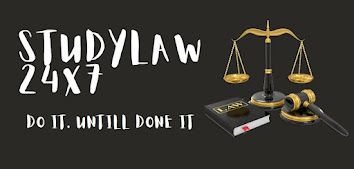This
article has discussed about the most important part of the Indian Constitution i.e.,
Preamble of the Constitution. Containing landmark judicial remarks over Preamble, purpose and objectives; and basic features of the Preamble.
1.
PREAMBLE:
The
Preamble is the object of the Constitution. It becomes very helpful to
understand the nature of the Constitution. The Indian Constitution also has a
Preamble and that envisages the basics of the Indian Constitution.
In
re Berubari case (1960), in that case the Hon’ble
Supreme Court has held that Preamble of Constitution is a key to open the mind
of makers to show the general purpose of the Constitution.
The
Preamble of the Indian Constitution has declared that –
“WE, THE PEOPLE OF INDIA,
having solemnly
resolved
to constitute India into a SOVEREIGN
SOCIALIST
SECULAR DEMOCRATIC REPUBLIC
and
to secure to all its citizens:
JUSTICE,
social, economic and political;
LIBERTY
of thought, expression, belief, faith and
worship;
EQUALITY of status and
of opportunity;
and
to promote among them all
FRATERNITY assuring the dignity of
the individual
and
the unity and integrity of the Nation;
IN OUR CONSTITUENT ASSEMBLY this
twenty-
sixth
day of November, 1949, do HEREBY ADOPT,
ENACT
AND GIVE TO OURSELVES THIS
CONSTITUTION”.
“We
the People of India”. It is the resolve of the people of
India to constitute India into a Sovereign Socialist Secular Democratic Republic.
From the Preamble of the Constitution, it is clear that the framers of the
Constitution attached importance to the sovereignty of the people. The Constitution
of India in its preamble states that the people of India have “solemnly resolve
to constitute India into a Sovereign Socialist Secular Democratic Republic”. The
idea of Sovereignty involves freedom from all foreign control and
domination. The idea of democracy involves freedom from all internal
control or domination. Both the ideas combined together reassert the
sovereignty and paramountcy of the people’s will over everything. The idea
of Republic indicates that executive head of the state is not hereditary
monarch but elected representative. Secularism means state does not have
any recognized state religion.
In
Kesavananda Bharti
Vs.
State of
Kerala (1973), in that case the Hon’ble Supreme Court
rejected the view that the Preamble as the key to open of mind and held
that Preamble is the part of Indian Constitution.
However,
In Randhir Singh
Vs
Union of India (1982), the Supreme Court is relaying
on the Preamble and Article 14 and 16 held that Article 39(d) envisages a
constitutional right of ‘equal pay for equal work’ for both men and women.
2.
PURPOSE OF THE PREAMBLE:
The
following are the important purpose of the Preamble;
The
Preamble of the Constitution has declared India to be a, Sovereign Socialist
Secular Democratic Republic. State is the supreme it has declared by Preamble
of the Indian Constitution.
The
Preamble of Indian Constitution provides India into a Republic country. The Political
sovereignty vested in the hands of people. In our Constitution there is a
President who is constitutional head of the State. The term democratic
indicates the rule of people to elect their representatives and they remain
responsible to the people.
3.
OBJECTIVES ENSHRINED IN THE PREAMBLE:
The
following are the objectives which the Preamble secures to every citizen:
Justice
– social, economic and political;
Liberty
– of thought, expression, belief, faith and worship;
Equality
– of status and of opportunity; and to promote among them all;
Fraternity
– assuring the dignity of the individual and the unity and integrity of the Nation.
4.
AMENDMENT OF THE PREAMBLE:
Can
Preamble be amended under Article 238 of the Constitution? The question was for
the first time ask in the case of, Kesavananda Bharti vs. State of Kerala
(1973). In that case Attorney General argues that by the virtue of the
amending power in Article 368 event the Preamble can be amend. It was said that
since the Preamble was a part of the Constitution could be amended like any
other provisions. The Supreme Court, however, held that the Preamble is a
Part of the of the Constitution and the decision of the Berubari case was
wrong.
On the question whether the Preamble can be
amended the majority held that since the Preamble is part of the Constitution
it can be amended but the “Basic Feature” of the Constitution can be amended.
The basic feature of the Preamble like, ‘Sovereign Democratic Republic’.
In
42nd Constitutional (Amendment) Act, 1976 inserted three words in
the Preamble, they are, ‘Secularism Socialism and Integrity’. These are
also the basic feature of the Preamble which cannot be amend.
However,
In Excel Wear vs. Union of India (1979), the hon’ble Supreme
Court considered the effect of the word ‘Socialist’ in the Preamble. The Court
held that the term ‘Socialist’ might enable the court to lean more in favour of
nationalism and ownership of industries.
In,
D. S. Nakara vs. Union of India (1983), the Court held that the
base of Socialism is to secure worker.
In,
S. R. Bommai vs. Union of India (1994), the Supreme Court held
that the term ‘Secularism’ is a basic feature of Preamble.
In,
Aruna Roy vs. Union of India (2003), the Supreme Court also held
that positive meaning of Secularism is to developing, understanding and respect
towards the different religion.
5.
CONCLUSION:
In
conclusion, it would be accurate to say that the preamble is a fundamental
component of the Constitution because it embodies its philosophy and spirit.
The Constitution's core values and guiding principles are highlighted in the
preamble.

.jpeg)
.png)

.png)

No comments:
Post a Comment